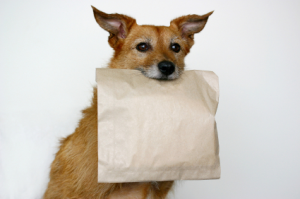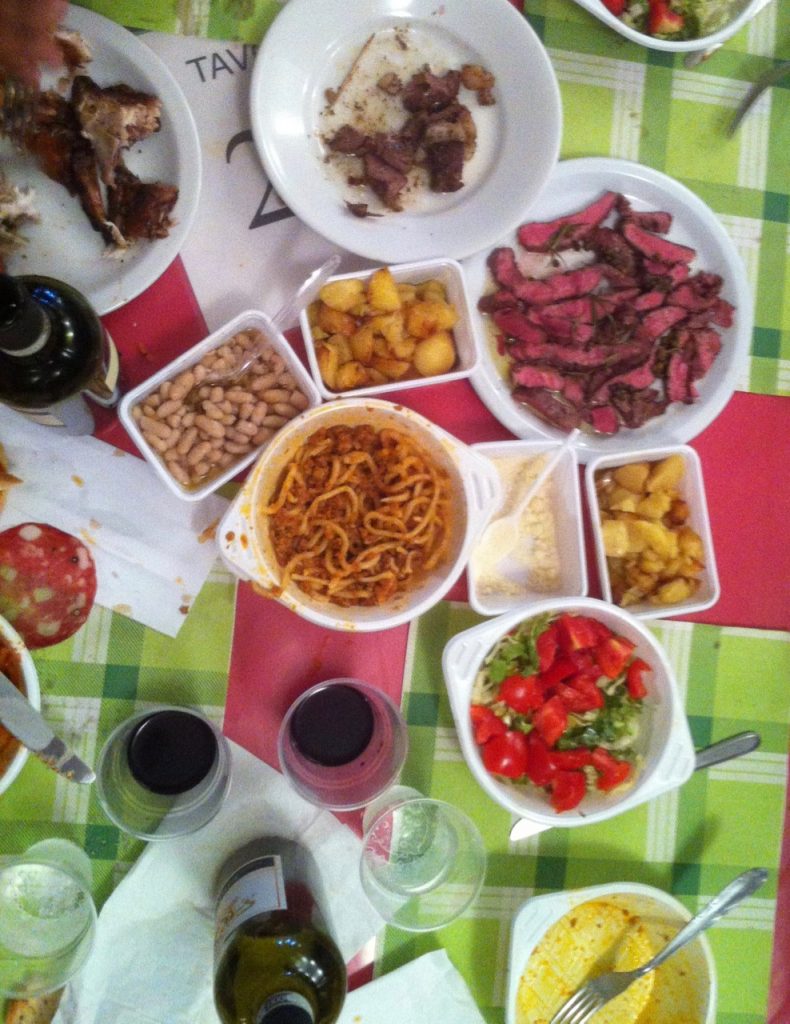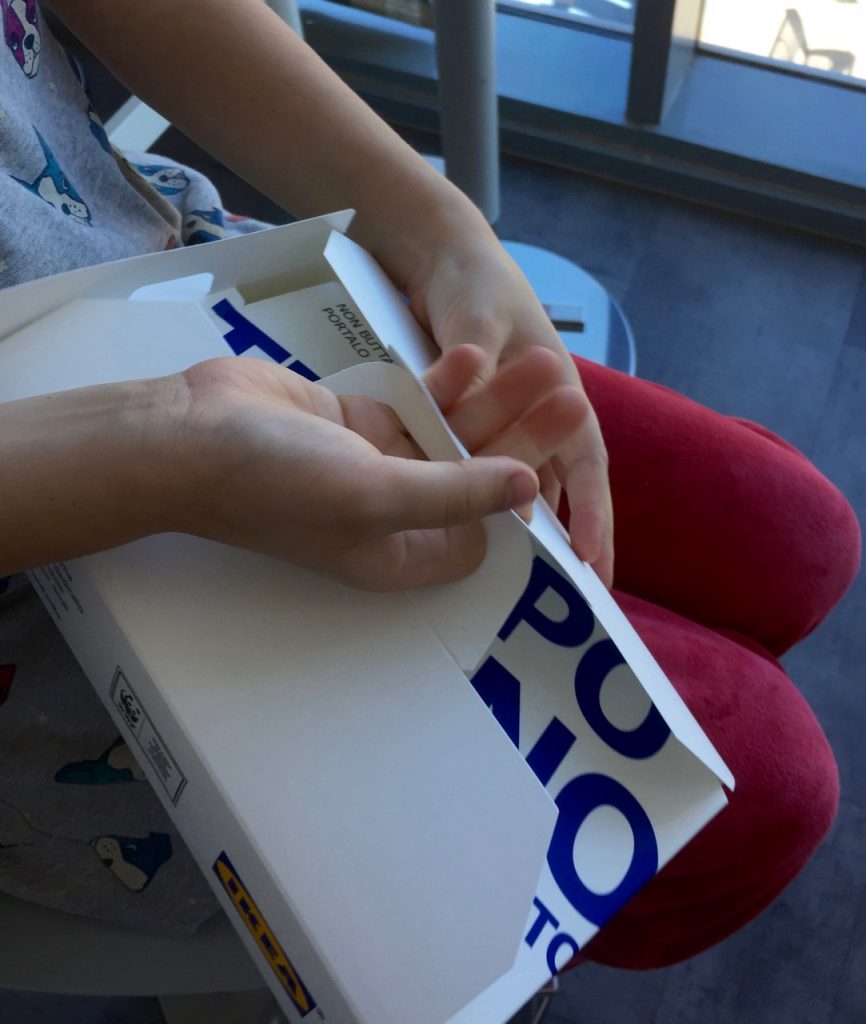We live in Florence and so we’ve had visitors come to stay. As you’d expect we usually take them out to eat and sometimes – after a serious 3 or 4-course affair – someone might declare they’re full and suggest they bring home the leftovers. “How do I ask for a doggy bag?” “Umm… well”, I reply. “It’s not really what you, um, do here”. So they order some more wine and keep picking at their steak and grilled fennel. Which I assure them wouldn’t taste the same tomorrow anyway.
In Italy you eat what is on your plate. There is an unspoken understanding between the chef and you: that she/he knows how much you should eat of a certain dish to satisfy your taste and that you should know yourself how much you can handle today. There is still a strong current of resusing unused food in traditional recipes – like in Tuscany where old bread is used for the next day’s Ribollita soup (my preferred comfort food) or Panzanella, bread salad.

But recently Italians have started to admit they can’t always finish up their meals and are trying – with the help of the government – to embrace a new concept. The doggy bag.
The name – doggy bag – is thought to originate in wartime America where responsible citizens were encouraged to feed their pets only with table scraps, taking them home in wrapped up wax paper bags marked with “Bones for Bowser”. Diners soon starting asking for it for themselves and the concept stuck. This is from an interesting Smithsonian article I found.

While it’s easy to ask for a doggy bag in an American or Canadian restaurant it’s just not common in many parts of “Europe”. Taking care of your leftovers is popular with thrifty and conscientious hipsters as well as graphic designers, and big-shot English chef Hugh Fearnley-Whittingstall leads a campaign called Too Good to Waste, an effort to persuade nicer British establishments to offer doggy boxes. They have a cute slogan: Be a lover, not a leaver.
But the issue goes well beyond individual diners and into the much wider global issues of food and waste management. The FAO has estimated that 40% – that’s 40% – of food produced in Europe goes to waste. France passed some fairly tough laws last year which punish producers who do not deal with the issue. The Italians decided instead to take the kinder track, to instead provide incentives and improve ease of use. Perhaps they were encouraged by the interest taken in the issue by Francesco, everyone’s favourite pope.
In August this year the Italian senate unanimously passed into law a bunch of measures to start dealing with food waste. Aiming to reduce the estimated 5 million tons of food thrown away every year, the measures include ways for companies and farmers to more easily donate unused food to charity by setting realistic rules about sell-by dates and food safety and liability issues.

But of most interest was the inclusion of an initiative to encourage ordinary Italians to break the habit and consider it normal to take their unfinished food home rather than let it go to waste. A budget of one million euros was set aside for a government initiative to persuade people to start using doggy bags – so far it’s hard to see exactly what has been done but it sounds good.
The under-secretary responsible, Barbara Degani, declared “the family bag is a semantic upgrade of the famous doggy bag, allowing us to take the concept out of the ghetto of our imaginary modesty and ask for one at the end of a good meal. The choice to not waste must be the new way of life. So asking for a FB (family bag) is a marker of virtuous behaviour.”
The idea of the family bag is going to take some time to trickle down and will need a push to get people used to the idea. It is a big change. This week there was a news story, for World Food Day, about a “nudging” experiment carried out in a Milanese restaurant. The diners were each left a two-coloured token on their place setting when the meal started. The token was meant to be a neutral way of indicating their interest in taking home what they could not eat. It was left on the table with the green side up, indicating the diner would be happy to have a doggy bag. They had to make a conscious change to red to decline the service. Apparently they were successfully nudged into taking the food home.
We are used to taking extra food home, especially with kids, but we haven’t done it much here apart from the occasional pizza. On a recent IKEA trip, we discovered in their restaurant they have a stack of flatpack doggy boxes. Like any other product it needed assembling and was a bit smaller than expected. I still find it odd to see Italians lunching on meatballs and daim cake (even if the restaurant does sell wine by the glass) but this might give them some ideas in the food recycling department.
Troppo buono per essere spreccato, the boxes declare – too good to chuck away. Trust the Scandinavians to start getting the message across.

—————-
Other posts you might be interested in:
More about real dogs in The Life Domestic